Stir-fried lamb kidneys, a dish celebrated in many global cuisines, offer a unique blend of rich flavor and tender texture when prepared correctly. Often overlooked in Western cooking, this organ meat is a staple in Middle Eastern, Chinese, and European kitchens, where it is prized for its robust taste and nutritional benefits. This article delves into the intricacies of preparing stir-fried lamb kidneys, from selecting the finest ingredients to mastering the cooking technique. Whether you are a seasoned home chef or a curious food enthusiast, this guide will equip you with the knowledge to create a dish that balances bold flavors and culinary precision.
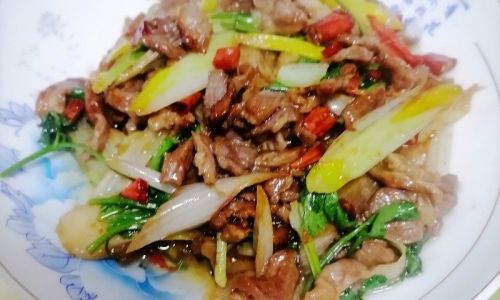
Understanding the Ingredient: Lamb Kidneys
Lamb kidneys, like other organ meats, are nutrient-dense and packed with protein, vitamins, and minerals. They are also relatively inexpensive compared to prime cuts of meat, making them an economical choice for budget-conscious cooks. However, their strong, earthy flavor and delicate texture require careful handling to avoid a rubbery or overly gamey result.
When purchasing lamb kidneys, look for fresh, plump specimens with a vibrant red hue and minimal discoloration. Avoid kidneys that appear slimy, dry, or have a strong ammonia odor, as these may indicate spoilage. If possible, source them from a reputable butcher or specialty grocery store to ensure quality.
Preparing the Kidneys: Cleaning and Trimming
The key to a delicious stir-fried lamb kidney dish lies in proper preparation. Lamb kidneys have a tough outer membrane and a core of fatty tissue that must be removed before cooking. Here’s a step-by-step guide to cleaning and trimming:
- Rinse the Kidneys: Place the kidneys under cold running water and gently rub the surface to remove any blood or debris.
- Remove the Membrane: Using a sharp paring knife, carefully slice away the outer membrane. Work slowly to avoid puncturing the kidney.
- Trim the Fat and Core: Locate the fatty core (often a whitish or yellowish section) in the center of each kidney. Cut it out and discard it, as it can impart a bitter taste.
- Slice Thinly: Once cleaned, slice the kidneys into thin, uniform pieces. This ensures even cooking and helps tenderize the meat.
For added tenderness, some chefs recommend soaking the sliced kidneys in a mixture of water and vinegar (or lemon juice) for 15–20 minutes. This step helps neutralize any lingering gamey flavors and firms up the meat.
Marination: Enhancing Flavor and Tenderness
Marinating lamb kidneys is a critical step in achieving a balanced flavor profile. The right marinade can tenderize the meat, infuse it with aromatic notes, and counteract any residual strong flavors. A classic marinade for lamb kidneys includes:
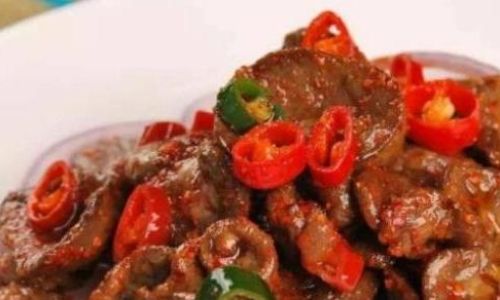
- Soy Sauce: Adds umami depth and saltiness.
- Shaoxing Wine (or Dry Sherry): Imparts a subtle sweetness and helps tenderize the meat.
- Cornstarch: Creates a light coating that seals in moisture during cooking.
- White Pepper: Enhances the dish’s warmth without overpowering it.
- Sesame Oil: Adds a nutty aroma.
Combine these ingredients in a bowl, add the sliced kidneys, and toss gently to coat. Allow the meat to marinate for at least 20 minutes (or up to an hour in the refrigerator) before cooking.
The Stir-Frying Process: Heat, Speed, and Precision
Stir-frying is a high-heat cooking technique that requires attention to detail. The goal is to sear the lamb kidneys quickly, locking in their juices while developing a caramelized exterior. Here’s how to execute this perfectly:
- Preheat the Wok or Skillet: Use a carbon-steel wok or a heavy-bottomed stainless-steel skillet. Heat it over high heat until it begins to smoke slightly.
- Add Oil: Swirl in a neutral oil with a high smoke point, such as peanut or canola oil. Avoid olive oil, as it can burn at high temperatures.
- Sauté Aromatics: Toss in minced garlic, ginger, and dried chili flakes (if using). Stir-fry for 10–15 seconds until fragrant but not browned.
- Cook the Kidneys: Add the marinated kidneys to the wok in a single layer. Allow them to sear undisturbed for 30–45 seconds before stirring. This ensures a golden crust.
- Stir-Fry Rapidly: Use a spatula or wok ladle to toss the kidneys continuously for 2–3 minutes. Avoid overcrowding the pan, as this can steam the meat instead of searing it.
- Add Sauce and Finish: Pour in a pre-mixed sauce (see below) and toss to coat. Cook for an additional 1–2 minutes until the sauce thickens and the kidneys are cooked through.
Sample Sauce Recipe:
- 2 tbsp oyster sauce
- 1 tbsp soy sauce
- 1 tsp sugar
- 1/4 cup chicken broth (or water)
- 1 tsp cornstarch (dissolved in 1 tbsp water)
Achieving the Perfect Texture
Overcooking is the enemy of lamb kidneys. Due to their delicate structure, they require minimal cooking time—typically 3–4 minutes total. To test for doneness, slice a piece open; the interior should be light pink without any raw traces. Overcooked kidneys become dry, chewy, and unappetizing.
Flavor Variations and Customizations
One of the joys of stir-fried lamb kidneys is their versatility. Experiment with regional spices, herbs, and accompaniments to create endless variations:
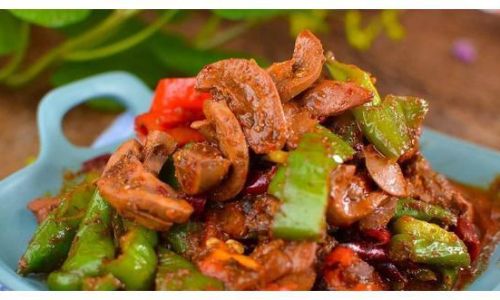
- Sichuan-Style: Add Sichuan peppercorns and doubanjiang (fermented chili bean paste) for a numbing, spicy kick.
- Middle Eastern Twist: Incorporate cumin, coriander, and fresh cilantro. Serve with warm pita bread.
- French-Inspired: Pair with butter, shallots, and a splash of brandy. Garnish with parsley.
- Vegetable Additions: Toss in sliced bell peppers, onions, or snow peas during the final minute of cooking for added crunch.
Serving Suggestions
Stir-fried lamb kidneys shine when paired with complementary flavors and textures. Consider these serving ideas:
- Rice or Noodles: Serve over steamed jasmine rice or nestled in a bowl of egg noodles to soak up the sauce.
- Lettuce Wraps: For a low-carb option, wrap the stir-fry in crisp iceberg lettuce leaves.
- Breakfast Dish: In some cultures, lamb kidneys are enjoyed at breakfast with fried eggs and toast.
- Appetizer Platter: Arrange the dish alongside pickled vegetables, olives, and fresh bread for a Mediterranean-inspired spread.
Common Mistakes to Avoid
Even experienced cooks can stumble when preparing lamb kidneys. Here’s how to sidestep pitfalls:
- Skipping the Soak: Failing to soak the kidneys in vinegar water can result in a lingering gamey taste.
- Overcrowding the Pan: Cooking too much meat at once lowers the pan’s temperature, leading to steaming instead of searing.
- Under-Seasoning: Lamb kidneys benefit from bold seasoning to balance their inherent richness.
- Using Low-Quality Oil: Cheap oils with low smoke points can burn, ruining the dish’s flavor.
Health Benefits and Nutritional Profile
Lamb kidneys are a nutritional powerhouse, offering:
- Protein: Approximately 26 grams per 100-gram serving, essential for muscle repair and immunity.
- Vitamins: Rich in B12, riboflavin (B2), and folate, which support energy metabolism and red blood cell production.
- Minerals: High in iron, selenium, and zinc, crucial for oxygen transport and antioxidant defense.
However, they are also high in cholesterol and purines, so moderation is advised for those with heart conditions or gout.
Cultural Significance
Lamb kidneys hold a special place in global culinary traditions. In China, they are a beloved ingredient in hotpot and stir-fries, symbolizing warmth and nourishment. In Britain, they are a classic component of the traditional breakfast fry-up. In Morocco, they are grilled and served with cumin and lemon, embodying the country’s vibrant street food culture.
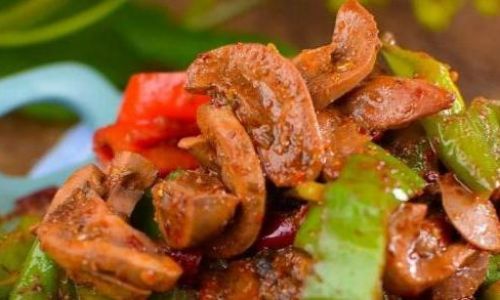
Conclusion
Stir-fried lamb kidneys are a testament to the idea that no part of the animal need go to waste. With proper preparation, they transform into a dish that is both luxurious and deeply satisfying. By mastering the cleaning, marinating, and stir-frying techniques outlined in this guide, you can elevate this humble ingredient into a restaurant-worthy meal. Whether you seek to explore new flavors, honor culinary traditions, or simply expand your recipe repertoire, stir-fried lamb kidneys offer a rewarding journey into the art of organ meat cooking. So, heat your wok, sharpen your knife, and embark on a culinary adventure that celebrates the bold, the tender, and the utterly delicious.
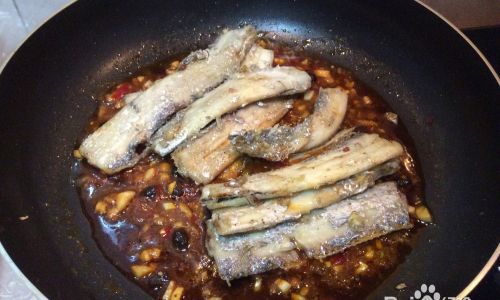
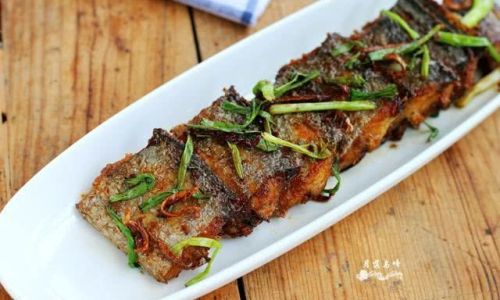


0 comments